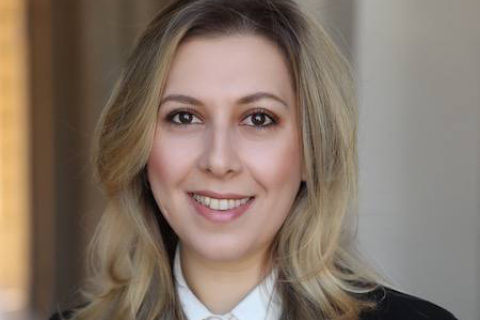For U.S. adults overall, the highest risk of death isn’t from car crashes, cancer or even stroke: It’s heart disease. The risk is even greater for certain populations, such as South Asian Americans, who are three to four times more likely than other Americans to develop heart disease and to die from it.
It’s a risk that’s remained largely unknown by many South Asian Americans and often unaddressed by providers.
The new South Asian Heart Program at UCLA – the first of its kind in Southern California – is focused on improving these odds and addressing the unique risk factors of this population.
That mission starts with raising awareness.
“Most South Asians don’t feel that they’re at elevated risk,” said Ravi Dave, MD, director of interventional cardiology at UCLA Health and director of the South Asian Heart Program, which opened in early 2025 at UCLA Santa Monica Medical Center. “They think, ‘I don’t have diabetes, I’m not overweight, I don’t smoke, I don’t eat red meat and I’m a spiritual person.’ But they forget there are other major factors that put them at much higher risk.”
More targeted screening
Many of these additional factors are missed by standard screening for cardiac disease risk. The screening calculators used in the United States don’t take ethnicity or a history of premature family heart disease into account, Dr. Dave said, nor do they provide an accurate assessment of the type of obesity to which South Asian Americans are more prone.
As a result, many at-risk South Asian Americans aren’t flagged, which means they lose the opportunity to make changes that could lower their risk and potentially head off later issues.
South Asian Americans also typically develop heart disease about 10 years earlier than other populations do, Dr. Dave said, further narrowing their window for preventive measures.
Although most people aren’t screened for cardiac disease risk factors until they’re age 25 or 30, South Asian Americans should be seen much younger – as early as age 18, he said. This includes screening for high blood pressure and for elevated levels of unhealthy cholesterol, including triglycerides and lipoprotein(a), which are usually associated with excess weight. In South Asian Americans, however, these markers may be present even if they’re not overweight.
Moreover, the traditional method of determining obesity, body mass index (BMI), doesn’t accurately measure cardiac disease risk for South Asian Americans, Dr. Dave said. While BMI measures diffuse obesity, in which fat is present throughout the body, it doesn’t account for central obesity, or fat around the middle. This excess abdominal fat, also known as visceral obesity, is more metabolically active and can lead to metabolic syndrome, which is a precursor to heart disease.
Visceral fat – what Dr. Dave has described as “the combination of thin limbs and a prominent belly” – is common among South Asian Americans but is typically missed by simply relying on BMI. It’s more accurate to measure waist circumference, he noted, with measurements of 35 inches or more for men and 31.5 inches or more for women considered risk factors for future heart disease, regardless of BMI.
Specialized procedures
South Asian Americans also often have smaller arteries, which can complicate cardiac treatment, Dr. Dave said. Their arteries may be too small to insert a stent (a small mesh tube used to keep the artery open so that blood can flow through it normally), leading many surgeons to consider them too high risk.
“We get patients referred to us who have such small arteries that they’ve been turned down for stents elsewhere,” Dr. Dave said.
The specialists at the South Asian Heart Program are able to offer several treatment options for cardiac conditions, starting with working with patients to aggressively reduce their cholesterol levels through a combination of medication and lifestyle changes.
“I tell my patients to think of the process of cholesterol deposition as a fast-moving train that’s continuing to deposit more cholesterol in the arteries and creating havoc,” he said. “The first thing to do is slow down and stop the train.”
In some cases, imaging studies reveal that plaque has narrowed the arteries, but that the arteries themselves aren’t actually too small. Removing these fatty deposits may forestall more aggressive measures.
In other patients, however, there’s so much arterial blockage buildup that additional interventions are necessary.
Arteries of South Asian patients often have a lot of calcium buildup, Dr. Dave said, which can harden the plaque and contribute to arterial blockages. In this scenario, UCLA Health physicians are able to use an approach called lithotripsy. The procedure, which uses sonic pressure waves to break up the calcium deposits, received FDA approval in 2021 and is based on a similar procedure that had long been used to treat kidney stones.
Removing these deposits may expand the arteries enough to allow a stent, Dr. Dave said.
Another option for patients with small arteries is an angioplasty with a drug-coated balloon, which is smaller than even the smallest stent and can deliver plaque-inhibiting medication directly to the walls of the artery.
Reducing risk through cultural-specific lifestyle changes
Addressing cardiac disease risk through exercise and diet is another key focus of the program. Both are important for prevention and for ongoing heart health in general, Dr. Dave noted, but also need to be personalized for members of the South Asian American community.
Research shows that South Asian adults need to exercise 20 minutes more each day compared to other adults to reap the same level of benefit, he said. That can be a tall order, given that exercise often isn’t part of the culture. “Many people raised in South Asia didn’t exercise when they were growing up. Even in the U.S., exercise is not part of the daily routine.
“Not only do we have to mobilize them,” he said, “we have to give them the bad news that they have to go above and beyond.”
Changing dietary practices also involves addressing multiple factors, he said. Even though many South Asian Americans, especially those from India and Sri Lanka, are vegetarians, they’re often “unhealthy vegetarians,” he said, given the high levels of complex sugars and saturated fats in their diets. “Even the Indian food you eat at restaurants is very unhealthy.”
That unhealthiness is compounded by adopting the “unhealthy part of Western food culture,” such as fast-food, he added.
Spreading the word
The South Asian Heart Program includes cardiologists as well as other experts such as endocrinologists, nutrition experts, nephrologists and behavioral specialists. Dr. Dave said that within about a year, he hopes to see it expand to Ronald Reagan UCLA Medical Center and to the various UCLA Health community clinics that offer cardiology services.
He also plans to host conferences to educate other doctors. “There are a lot of South Asian physicians in the U.S.” he said, “but they’ve adopted the U.S. screening calculators and aren’t fully recognizing the risk.”
Informational booklets are in the works in several languages, including Hindi, Urdu, Bengali, Gujarati and Tamil.
“This is a call to action for our community,” Dr. Dave said.
For first-generation South Asian Americans, the initial focus was on supporting themselves and their families and getting established in a new country, he said.
“Now, however, is the time for them to address their health and their children’s. Because the children were born as Americans, they sometimes forget that their ancestry is not American. Their risk is also high, and they need to be taken care of as well.”




